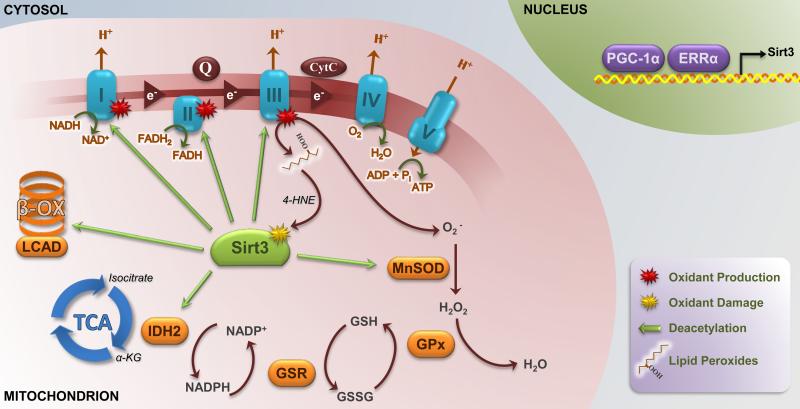Figure 1.
Overview of Sirt3 deacetylation targets, and regulation of Sirt3 expression and activity. Sirt3 is a mitochondrial matrix-localized deacetylase that targets various subunits of complexes within the electron transport system, and appears to be a critical regulator of cellular ATP. Sirt3 also deacetylates enzymes within the β-oxidation pathway, including LCAD, and within the TCA cycle, including IDH2. Sirt3 is also a key regulator of antioxidant defense pathways. Enhanced IDH2 activity yields critical regeneration of NADPH for the glutathione detoxification pathway, and deacetylation of MnSOD on multiple conserved sites has been shown to enhance the activity of this mitochondrial-localized dismutase. Sirt3 expression is regulated by PGC-1α and ERRα, while its activity can be inhibited by 4-HNE-mediated carbonylation. Sirt3, sirtuin 3; LCAD, long-chain acyl-CoA dehydrogenase; TCA, tricarboxylic acid cycle; IDH2, isocitrate dehydrogenase 2; MnSOD, manganese superoxide dismutase; PGC-1α, PPARγ coactivator-1α; ERRα, estrogen-related receptor α; 4-HNE, 4-hydroxynonenol; β-OX, β-oxidation; α-KG, α-ketoglutarate; GSR, glutathione reductase; GPx, glutathione peroxidase; Q, co-enzyme Q; CytC; cytochrome C.

